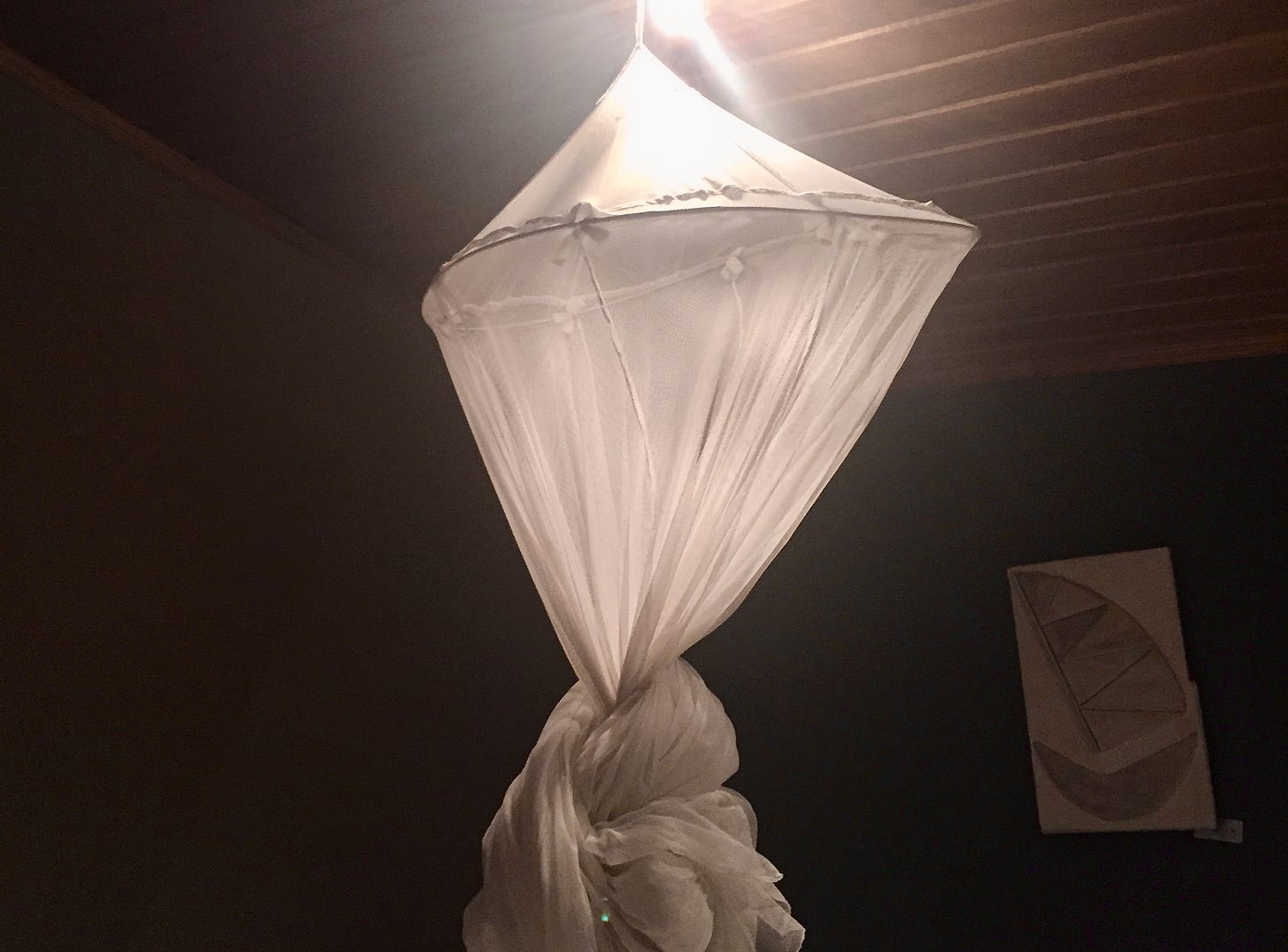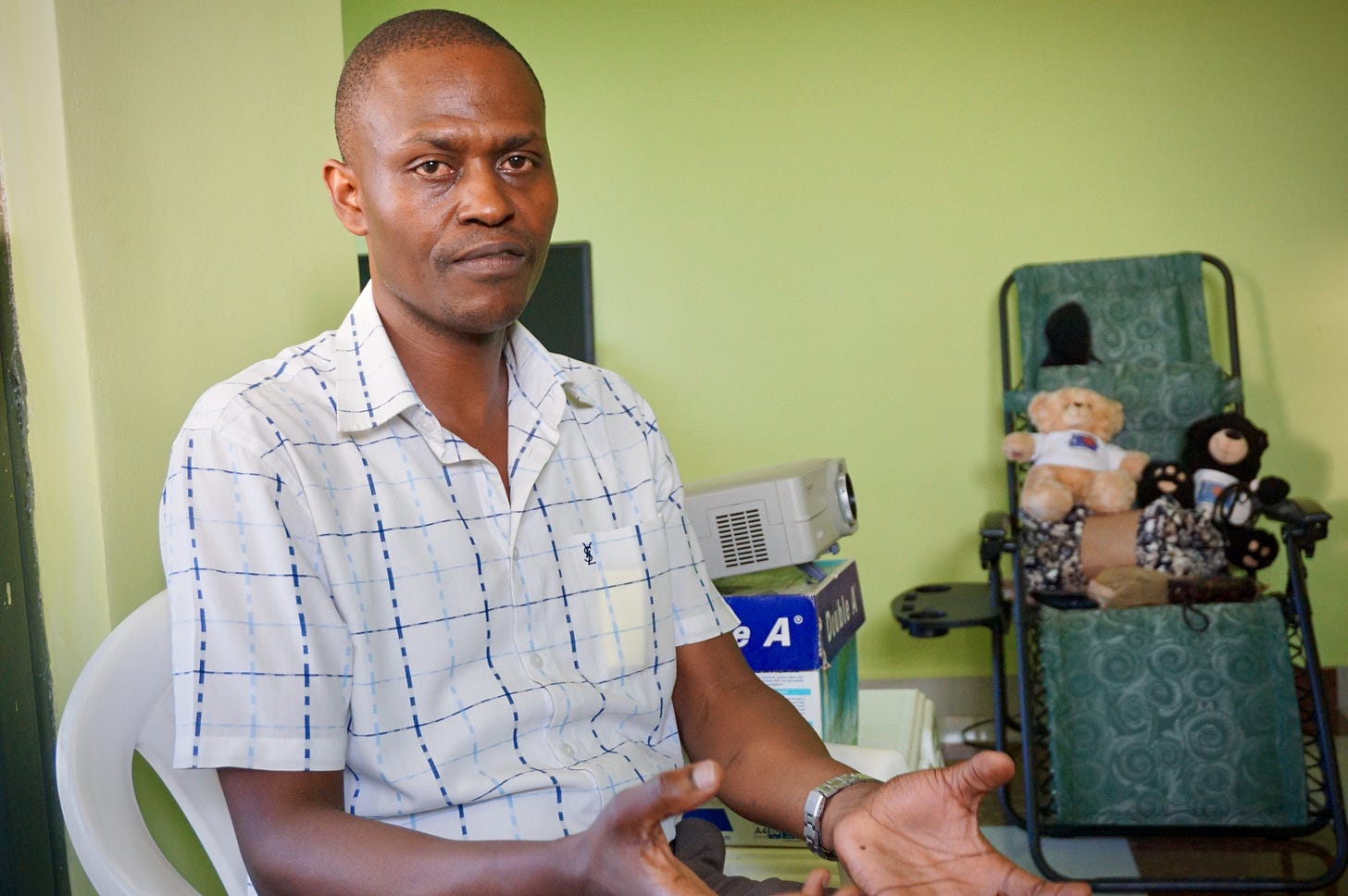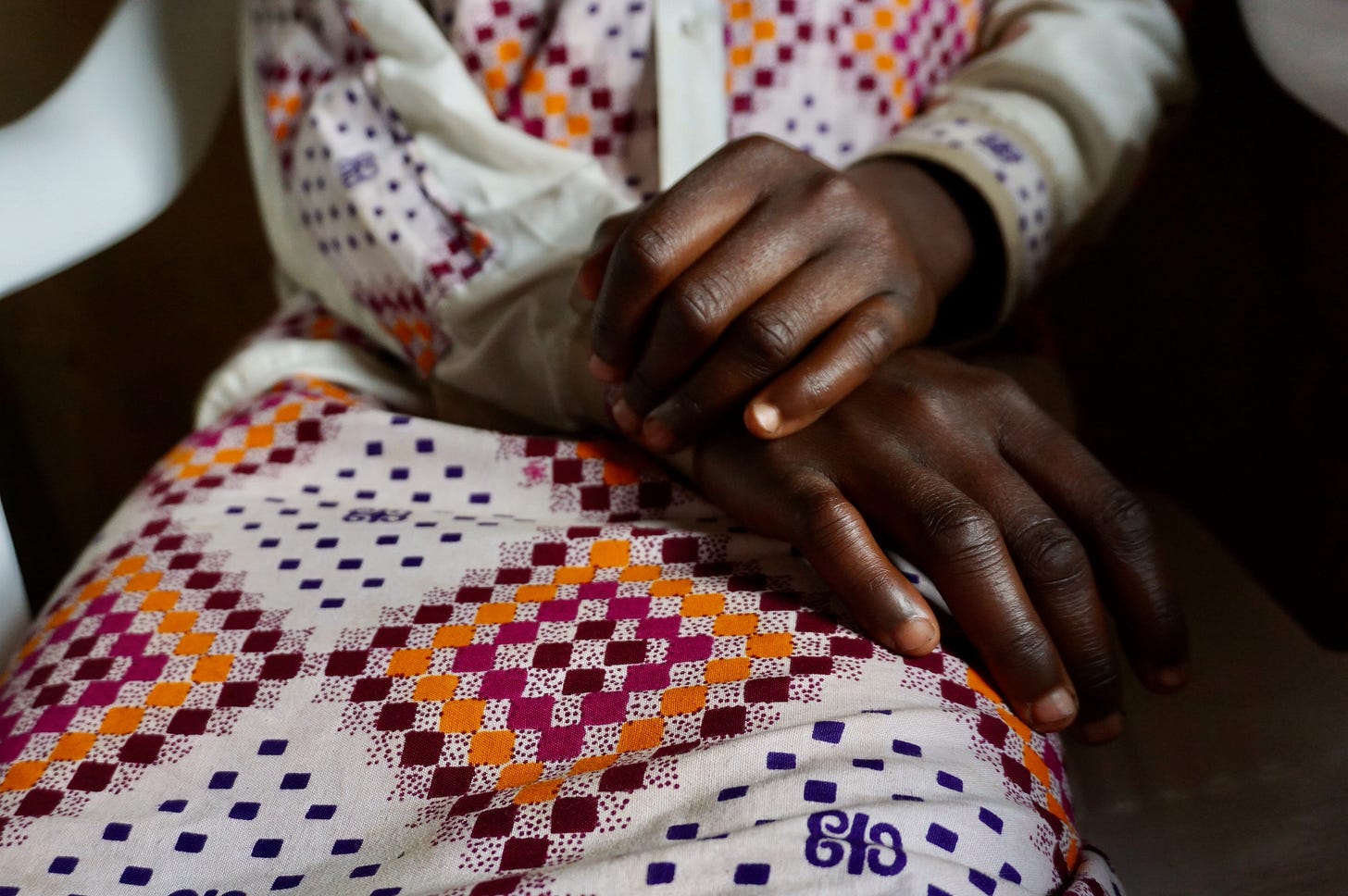How a journalist chases a monster, Part 8
How should journalists deal with traumatic stories and traumatized sources?
Read Part 1 of this series here. It will give you background on the story of the girls that this backstory is dependent upon.
It was around 3:30 in the afternoon and I was lying on my side in my hotel bed, staring out the window at a flat Lake Kivu. My mosquito net hung limply, unused. A thin light came off the gray lake and clouds, coating my room with unease.
I’d been in the Democratic Republic of Congo for a few days and, generally, my fixer, Jack, and I would start work by 7 a.m. and go into the night, conducting interviews in and around Bukavu and Kavumu. Instead, I told Jack that afternoon that I felt sick and needed to go lie down.
I said this to Jack, a man who once showed up in our dirty-white 4x4 to pick me up in the morning looking very ill.
“What’s wrong?” I asked. “You look terrible.”
“I have a headache,” he said, “but I went to the hospital before this and picked up pills.
“Pills for what?” I asked.
“I have a touch of TB and a touch of malaria,” was his response.
No wonder this guy was known as Jack Ryan. My god.
What I felt on that truncated day that made me go to my room and give up valuable hours of reporting was, thankfully, neither TB nor malaria, but something I can only describe as a kind of overall bad feeling in my body, a sense of extreme fatigue. I didn’t know what was going on.
As I lay in the bed, I began to tremble. Before I knew it, I was crying. Hard. I felt like an animal was trying claw its way out of me — it was the kind of crying that comes from a wounded soul.
After a couple hours of exhausting myself with emotion, though I could not will myself out of bed, I realized that nothing was wrong with me physically. It was the pain of this story finally hitting me. The gang rapes of dozens of tiny girls; the evil of the men who would tear them apart; the horror of what had been done to an entire village of people who make about a dollar a day, let alone the horror of what had been done to an entire country for hundreds of years at the hands of Belgians and corrupt Congolese leaders; the monstrosity of one thing on top of the next on top of the next.
Agony was unending here.
People have asked me for years how I continued to report on something so disgusting, so nightmarish — to keep moving closer and closer. How did I get through it? I can tell you that minus that one moment in my hotel room in Bukavu, I never felt paralyzed. I was able to resist succumbing to the nightmares because I had a purpose when reporting. (I was not always as successful as I'm making it sound, however.) Mainly, I was driven by one thing, which can be summed up by the powerful words of one of the Kavumu girls, aged 9 when I met her at the end of December 2015.
I asked her what she wanted me to tell the world on her behalf:
“Tell them how we were taken from our houses without knowing,” she said. “Tell them how we were destroyed.”
And while I felt diminished that afternoon in the hotel bed, I realized that I did not feel powerless. I’d come to Congo to tell the story of Kavumu because the DRC government was letting the attacks go on for far too long. For years. And I knew the power I held as a member of the international media in a country where journalism is regularly suppressed.
If that little girl could wield her power to tell me her story, I could wield my own to tell her story to the world. It was the least I could do.
A psychologist named Justin Chikuru, who worked with Panzi Hospital, said something to me in an interview during that trip that has stuck with me. He was talking about the Kavumu girls, but he revealed a general truth about trauma:
“You can’t heal a trauma,” he said. “It is always part of your story. At the beginning, when the girls are traumatized, they’re handicapped — they can’t do the things they want to do — it’s like their life has stopped. As you go through therapy, you integrate the story into your life.”
In 2016, I spoke to journalist Mark Leon Goldberg, who hosts an excellent podcast named “UN Dispatch,” about why I do this kind of harrowing work. The brief answer is that growing up with my own traumas, which were later compounded by unrelated incidents such as 9/11, led me to tell the stories of people nobody saw or heard.
In my experience, having tried to tell adults some of the things I was suffering as a kid and having them ignore me was more painful than the stuff I was trying to convey. That feeling that nobody cared about my suffering — it took me years of working on human rights and in war zones to face that this is what motivates me, but there it is. It has taken many years of therapy to understand this, and to get a handle on my own PTSD. On top of that, I’ve tried to ensure that my work within the boundaries of trauma journalism is helping to further integrate my own story into my life, and is not simply re-triggering my trauma response. (Sometimes I’m successful; other times, less so.)
I want to be the person who will actually listen, unlike the people in positions of power who ignored me. I want to be the person who lets others feel that they are not alone, that somebody does care. And that someone can do something concrete about what hurts them.
If I can communicate people’s messages in a way that helps their lives improve, then I will do that through my access to a free press. I may not be able to take away the actual harm they’ve suffered, but at least they can know there are people out there, even strangers — even some lady from halfway across the world — who care, very much, about their lives.
On the day I met with the Kavumu families, one girl, whom I’ll call Victoria, told me that it felt good that I’d traveled so far to speak to her. I could hardly wish for more, personally, but I also hoped that my work would result in some much-needed psychological, medical or legal assistance for her. These families also needed someone to build them safer houses. Ones that had actual doors, not just curtains, and serious locks.
Ultimately, I could only hope (and concertedly try to make sure) that what I wrote complemented local and international efforts by people who were trying support the girls and make these heinous acts stop. A unified voice is an amplified one, and in the case of Kavumu, each player had a unique role that had to be played to its fullest. The situation was so complex and far-reaching that it required people working on multiple fronts at once (medical care, legal advice, government advocacy and so on) to make a tangible change.
The girls were tired of feeling unsafe, ignored, and cast out, and they certainly deserved — and required — outside help. A lot of it.
As Victoria whispered her story to me, the air in our cramped, closet-like room began to feel oddly sharp yet amorphous. I had felt this before. I was starting to dissociate.
I could not let that happen; my pain was the last thing that mattered at that moment. It would be the worst kind of selfishness to indulge an ounce of it in front of Victoria. I was in Kavumu to do what I could for her, and I needed to stay alert to her state of being, which required keeping a grip on my own. If she was uncomfortable, I needed to be able to recognize that and downshift our conversation. The last thing I wanted was to retraumatize her.
I, like most journalists, am hardly a trained therapist. As a reporter, you pretty much have to seek out materials and conversations on how to interview a traumatized source; newsrooms don’t have any kind of mandatory training on how to conduct sensitive interviews — to the profession’s detriment. The way we handle such situations varies wildly. There’s an infamous story that has been circulating for a number of years — a friend swears it’s true — that a male journalist walked into a dusty refugee camp in Uganda (or DRC, the telling varies) and yelled out, “Anybody here been raped?”
Personally, I once seemed to be accidentally following the route of a well-known Western reporter as I met refugees in southern Turkey, at the Syrian border. They all had horrendous stories about their encounters with her — how she had run roughshod over delicate sources, like a 14-year-old Syrian rape and torture survivor who became so retraumatized after the reporter rushed through their interview that she refused to speak for days, and certainly never again to a journalist.
We also have to ask ourselves whether we are paying enough attention to our sources while they speak — not just to their words, but to their body language, their eyes, their tone of voice, to anything that indicates their emotional state. On top of that, it is best to be versed in the culture in which you are working: Not all people express emotion or pain the same way, and cultural norms affect these behaviors.
To soothe Victoria into a more comfortable state, if such a thing were possible under the circumstances, I asked what she loved doing every day.
Then in grade 5, she said she most enjoyed playing games, especially jump-rope.
Eventually, after talking about school and singing, and other things she liked, I meandered back to a tough question. I asked Victoria how many men had assaulted her. “Too many,” she said.
She looked away and fiddled with her hands, so I again switched to a lighter topic. What would she like to be when she grew up? A nurse, she said. She’d like to be a nurse. Some of the other girls want to be nurses too. One told me it was because of the kindness nurses had shown her during her hospital stay. I asked Victoria how her sister, who had also been raped, was doing.
“Well,” she said, not making eye contact. “A little bit better. Me, not so much.”
She chalked up her slower recovery to the fact that she had been older when she was assaulted than her sister had been during her attack. Victoria’s mother explained that her other daughter who had been raped was “young enough to forget.”
“When you’re older, you have the capacity to think about it too much,” the mother said.
Even so, the two girls’ attacks had brought them closer, Victoria explained. They had become better friends with a trauma to bind them.
When I met Victoria, she was struggling with feeling different, apart from her classmates because of her rape. She was also having flashbacks and nightmares.
Chikuru, the psychologist, explained that while these were all normal trauma responses, the girls of Kavumu were potentially facing more difficulties — an immediate and lifelong battle for their mental health — than many rape survivors around the world.
He pointed to Maslow’s hierarchy of needs, a pyramid that lays out stages of needs that must be met to reach what’s at the pinnacle: self-actualization. The lower levels of the pyramid contain the basics we need to simply stay alive: food, health, shelter and safety among them.
In what many Congolese I met called one of the poorest villages in one of the poorest countries in the world, the young survivors in Kavumu have never had a guarantee of any of those things.
“You can try to help yourself,” Chikuru said, “but when you lack the basics, you go right back into the trauma.”
As with the girls’ physical injuries, it will take years to determine whether they’ll be able to integrate their psychological trauma into their lives, and, hopefully, begin to prosper.
Read Part 9 of “How a journalist chases a monster” here.
Thank you, as always, for reading.







When I read these episodes of your DRC encounter I wonder how you evolved into the tender, loving, sensitive, caring person that you are. You go far beyond just an investigative, questioning journalist. I am overwhelmed with joy and pride to have you as my daughter. ❤️
There's a need for trauma-informed *everything* and I thank you for articulating its importance in journalism. Thank you for telling it so plainly and personally.